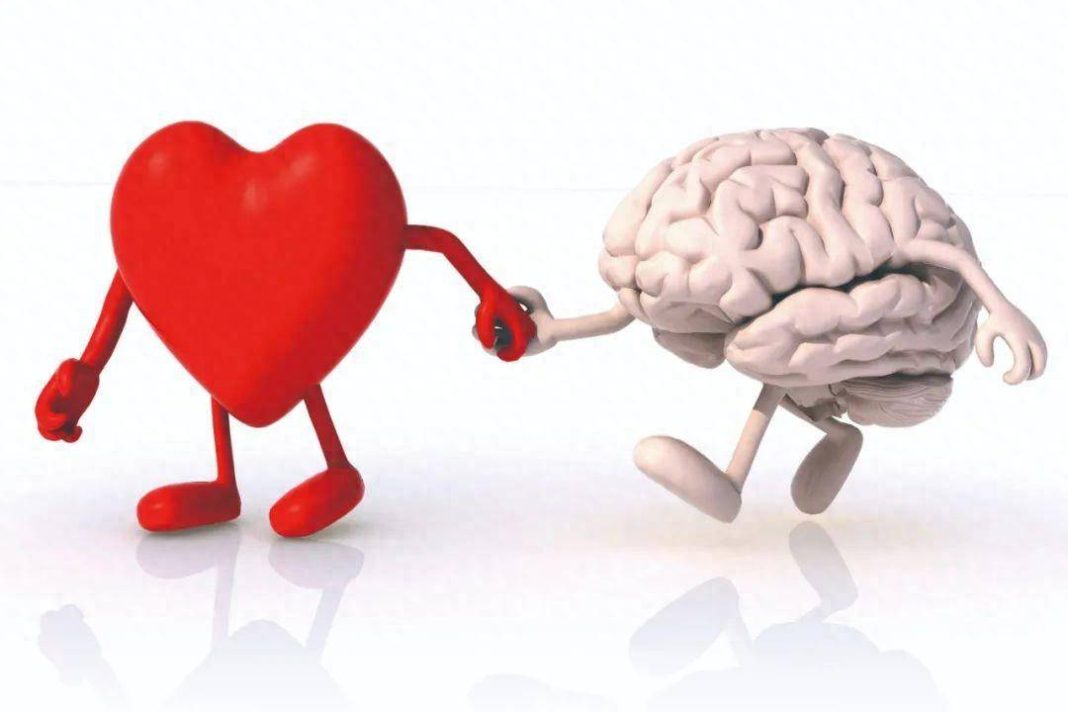In the late 19th century, psychologists proposed that when we respond to external stimuli, our bodies undergo certain changes that affect the brain’s emotions – for example, it is the accelerated heart rate or shallow breathing that triggers emotions like fear or anger, rather than fear or anger causing our heart rate to accelerate and breathing to become shallow. Research over the following decades has shown that when the heart, lungs, intestines, or other organs convey their signals to the brain, it does indeed affect our perception of the surrounding environment and the brain’s emotions.
Nowadays, researchers have found more and more examples where external stimuli lead to physiological changes, which in turn evoke emotional changes. To explore the connection between our physiology and emotions, they have chosen to start with the heart, and the results have shown that different stages of heartbeats have distinctly different impacts on the brain’s emotions.
Heartbeat Influencing Brain’s Attention
We know that the heartbeat can be divided into two stages: the contraction phase, where the heart muscle contracts and pumps out blood; followed by the relaxation phase, where the heart muscle relaxes and replenishes blood.
Starting in the 1930s, scientists discovered that the heart’s contraction phase could alleviate pain and inhibit startle reflexes in our brain. During the contraction phase, pressure sensors send signals related to heart activity to the brain’s inhibitory regions. This is useful because the brain constantly balances and integrates various internal and external signals, so we “cannot pay attention to everything at the same time.” Experiments even suggest that people are more likely to forget words they see during the contraction phase compared to the relaxation phase.
This imbalance in signaling occurs when the brain detects certain internal signals, leading to the inhibition of processing external signals. For instance, when our heart rate accelerates, the brain weakens its processing of external information.
A recent experiment once again demonstrated this inhibitory role of the heart. In the experiment, when participants were in the relaxation phase, even with extremely weak electric stimuli applied to their fingertips (almost undetectable), they could feel it, but they remained unaware during the contraction phase.
So, how does the heartbeat create this imbalance? Researchers point out that during the contraction phase, as the heart pumps blood to other parts of the body, the sensation at the fingertips may be limited to the pulsing of the heartbeat, causing people to overlook the weak electrical stimulation. The brain filters out signals that do not provide new information about the environment, which is beneficial for us, but as a result, even subtle touches may be suppressed.
However, there seems to be something that is not inhibited, and that is “fear” (various threats). Unlike “weak electrical stimuli,” fear, even during the heart’s contraction phase, can still be felt.
Differential Response to Threatening Stimuli
In 2014, a study suggested that the brain’s processing of “fear” is not inhibited during the heart’s contraction phase. Since the stimuli of “fear” activate the amygdala in the brain – an area related to fear experiences, it is not affected by the heart’s inhibitory function.
Excessive contraction of the heart due to “fear” stimuli can elicit adaptive responses. For example, when our heart beats abnormally fast and strong while we are in a state of fear, we become less sensitive to pain. Imagine a scenario where we are being chased by a fierce beast, and all our focus is on escaping. In the process of fleeing, we get hit by hard objects, scraped by rough surfaces, or stabbed by sharp objects, yet we do not feel much pain. Instead, our entire attention is on the beast behind us – this adaptability aids in our survival.
Recent research has revealed that this adaptability linked to “fear” is even stronger than previously thought.
Researchers first conditioned some subjects to associate certain shapes with electric shocks (assuming these shocks were safe). For instance, when a triangle appeared, they received high-intensity shocks; when a diamond appeared, moderate-intensity shocks; when a square appeared, low-intensity shocks; and when a circle appeared, there were no shocks.
Subsequently, researchers presented these shapes to the subjects and observed their reactions to these shapes during the contraction and relaxation phases.
Initially, researchers expected that the subjects would generally exhibit more fear towards shapes associated with electric shocks (triangle, diamond, square); however, the subjects felt fear towards all shapes presented during the contraction phase (even the circle).
Researchers suggest that when the heart beats, there is an inherent aspect to what is revealed that makes it more terrifying, causing them to forget that a circle was shock-free during the experiment. As a psychiatrist pointed out, “the heartbeat signal possesses an intrinsic threat value, which can slow down our intentional forgetting of threats.”
When the Inner World Dominates Everything
Adaptations beyond “fear” responses may also be rooted in the interplay between heartbeats and inhibition. In another study, researchers found that rapid eye movements occurred during the contraction phase while fixed gazes were frequent during the relaxation phase. During rapid eye movements, the brain momentarily obscures our vision, leading us to miss changes in the surrounding environment. It seems that only during inner calmness do our eyes truly “see” the surroundings.
Researchers further discovered that in anxious individuals, the heart’s contraction phase is more likely to enhance the fear processes. They aim for their work to guide the treatment of certain phobias and post-traumatic stress disorders. By altering the degree of “threatening stimuli” and presenting these stimuli at different stages of the heart cycle, it may help individuals break free from anxiety in some way.
Other scientists are investigating how information sampling, sensory processing, and behavior adapt to rhythms such as breathing and digestion. A clear aspect emerging from these studies is that although our world is an objective existence, how we perceive it depends on our own body.


